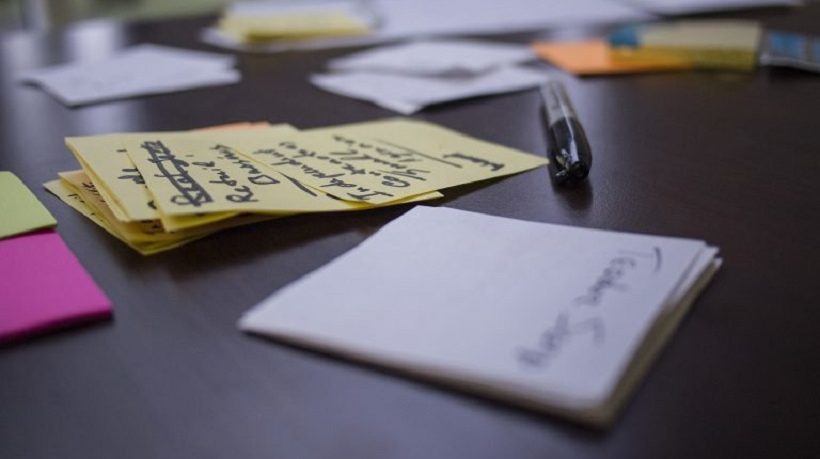Design Thinking For Instructional Design: Prototyping
The final article in the Design Thinking for Instructional Design series (Check Part 1 here, Part 2 here, and Part 3 here) is entirely dedicated to the mode of Prototype. I decided to focus on this because, in my experience working with Instructional Designers, I see prototyping as the most underutilized and/or incorrectly implemented tools of design thinking (or agile/SAM). There are several aspects of prototyping that are fundamentally different (aka completely opposite) to the documentation, storyboarding, and draft/revision cycles typically created when following a traditional Instructional Design process.
Like many Instructional Designers, I started my career following ADDIE. In the analysis stage, I would conduct a learner needs analysis and create a training requirements document. Taking that information, I would then create a solution design document. This document would carefully detail the type of instructional method I chose. From there, when approval was given, I would create the first version of my storyboard (for eLearning) or facilitator guide and presentation deck (for instructor led training). A lot of time in the project plan was dedicated to allow for this first version to be written. The documents would go through review, get revised, reviewed again, and then sent to development. Once the final product was created, another group was typically brought in to test the course during user acceptance testing or a pilot delivery of the program. At this point, there was an impending deadline and very little time left on the project. If massive changes were (and they often were) recommended, it meant late nights, pushed deadlines, out of scope work... or worse yet, the dreaded “on hold”! None of this was benefiting the learners who just needed our help to do their job better.
The problem I struggled with so much in a traditional model, as described above, is that no matter how good and detailed my storyboard was, no matter how thorough my facilitator guide scripted out the course, it was not until the testing - the ability to get in there and “see it action” - that I got the type of feedback I really needed. And, by then, it was too late. Prototyping solved this problem for me. It allowed me to put an actual product in front of an audience really early, giving me the meaningful feedback I needed when I still had the budget, time and energy to make the modifications.
Prototyping An Instructional Product: A Real World Example
So, what does it mean to prototype an instructional product? What steps do you take? Let me give you a real world example.
In my previous role, I consulted with large organizations to create performance changing programs. For one client, I was helping design a course for used car sales associates. During the design thinking mode of Define, we determined the performance problem we were actually solving was that salespeople weren’t getting to know the used vehicle inventory they had on hand. The better they knew the vehicles currently in stock, the more quickly they could meet the needs of their used car buyer, therefore increasing their sales.
During Ideate, we came up with a potential solution to this problem by having learners virtually live a day in the life of a salesperson. We would give them free reign over their day, and a virtual dealership to explore. In this simulated environment, they could uncover all the ways to learn about their inventory, discovering that the more knowledge they had of their inventory, the better their ability to sell.
The first Prototype was a sketch on the whiteboard. A messy (I am horrible at sketching) depiction of an aerial view of a car dealership, a clock and a car sales meter. We talked and sketched, and erased our way through the learner experience. We sketched how a learner could choose to go explore the car lot, or go sit on the steps out front, or go talk to the service manager – each choice impacting the amount of knowledge a salesperson would gain about his/her current inventory. When we all had a clear understanding of the concept, we took the sketch prototype a step further and created a quick electronic mockup (see image with this article).
The next day, we were able to test the prototype with some real learners and leaders. The insights we gained and the progress we made within two days was what I had made after months of review cycles in my previous world. And, the greatest part - I actually got to take their suggestions and improve the quality of my design! In the old world, I would hear myself saying, “That’s a great idea, but unfortunately, we don’t have time to make that level of adjustment. Maybe for the next version...”. With prototyping, you open yourself to the ability to make real-time improvements to your product.
The concept we moved from prototype to development was vastly improved from the initial design of the whiteboard sketch, thanks to feedback from our testers. The end result was a fabulous program that not only won industry awards, but most importantly, changed the behaviors of the sales team and increased the number of vehicles sold! Real results from training!
Unfortunately, while prototyping is fantastic, making the shift to prototyping after the organization (and you) have been creating elaborate design documentation is often a huge and complex change. You will need to fundamentally alter your thinking and reset your client’s (internal or external) expectations. The guidelines provided below may help you navigate the change.
Prototyping: 6 Best Practices
1. Acknowledge And Embrace The Intent Of A Prototype
A prototype is not a first draft of your course. Prototypes are a start of a dialogue and a tool to elicit feedback on your design. And, prototypes are not intended to be successful. They are designed for failure. Instructional Designers, like many people, are often afraid of failure. This leads to trying too hard to get the prototype “right” before testing it with users. You shouldn’t strive to get it right the first time. In fact, you should actually be happy about failing! With failure comes feedback - and that gets you closer to a solution that will be a success. And, the best thing about prototype failure is that it comes early in the process, when you still have time and money left.
2. Act Quickly
The ideation session (or design session or Savvy Start) should be immediately followed, if not also incorporate, the prototype mode. Do not sit on the ideas generated for any length of time without moving forward to prototyping. For scheduling purposes, you may want to book the morning for ideation, the afternoon for prototyping and the next morning for testing the prototypes. The longer the distance between the ideation session and the prototyping, the less likely you are to remember what the intent of the idea was from the start. Give yourself the time you need, block it on your calendar, and immediately start prototyping after an idea surfaces.
3. Clearly Set The Expectations Of Testers
Simply throwing some stick figures, with “blah, blah, blah” written on the screen in front of executives can be a recipe for disaster. Prototypes need to be protected by a bubble wrap of clear communication. Show some examples of what prototypes (in the product design or website design) look like and explain it’s going to be messy. Tell the testers that you want them to focus on the interaction, not the colors or the content. In fact, a best practice is to use black and white, stick figures and as little real words as possible.
4. Provide Clear Instructions, But Act As An Observer
Don’t take over the entire experience. Allow for the test learners to explore, to take you in a different direction than you expected. Often, this helps build an even better second iteration of the prototype.
5. Be Mentally Prepare To Scrap It And Start Over!
Prototyping is not a one time event. Immediately following the input from the testers, you either throw away the prototype and move to a new idea, or start on an iteration from the first prototype. Making real-time changes to the prototype, while testing is underway, allows you to put a new iteration in front of the tester immediately. You can ask, “What if we did this?” and see how they react. This is iteration in real time, and it works wonders to quickly move to a product that is ready to enter into development.
6. Use The Appropriate Type Of Prototype
It's important to understand that there are different levels and types of prototypes. The sketch I did on the whiteboard? That’s a sketch prototype - it’s the most rudimentary prototype there is. The next prototype, the functional prototype, is one level further along than a sketch prototype. Once we get feedback on the functional prototype, we can do a media prototype. This type of prototype allows us to choose colors, photography or illustrations, button sets and look and feel options for the facilitator guide, presentation or eLearning we are creating. The final type of prototype that is beneficial for instructional product design is the content prototype. A content prototype allows you to draft out some content, a few pages of a facilitator guide, or a few screens for an eLearning, and put it in front of the learner testers and the business stakeholders (legal, marketing, SMEs, etc.) to get feedback on word choice, tone, and level of detail you intend to create throughout. It’s a lot easier to modify a few pages of content in order to establish the right tone and use the right word choice (associates or employees?) than to globally change an entire draft.
Moving to prototyping from documented design is a challenge I’ve personally experienced. I still find myself falling back into old habits at times and over documenting, getting feedback too late in the process. It’s so easy to sit in your office, open a document and start typing. But, to create the type of instructional product that solves the learner’s performance problem, that is meaningful to them, and that is embraced by the organization, you need to be able to get feedback on the design very early in the process. So, get out there; put yourself in the uncomfortable position of doing something new and different - remembering that change is often difficult, but is so worth it!







